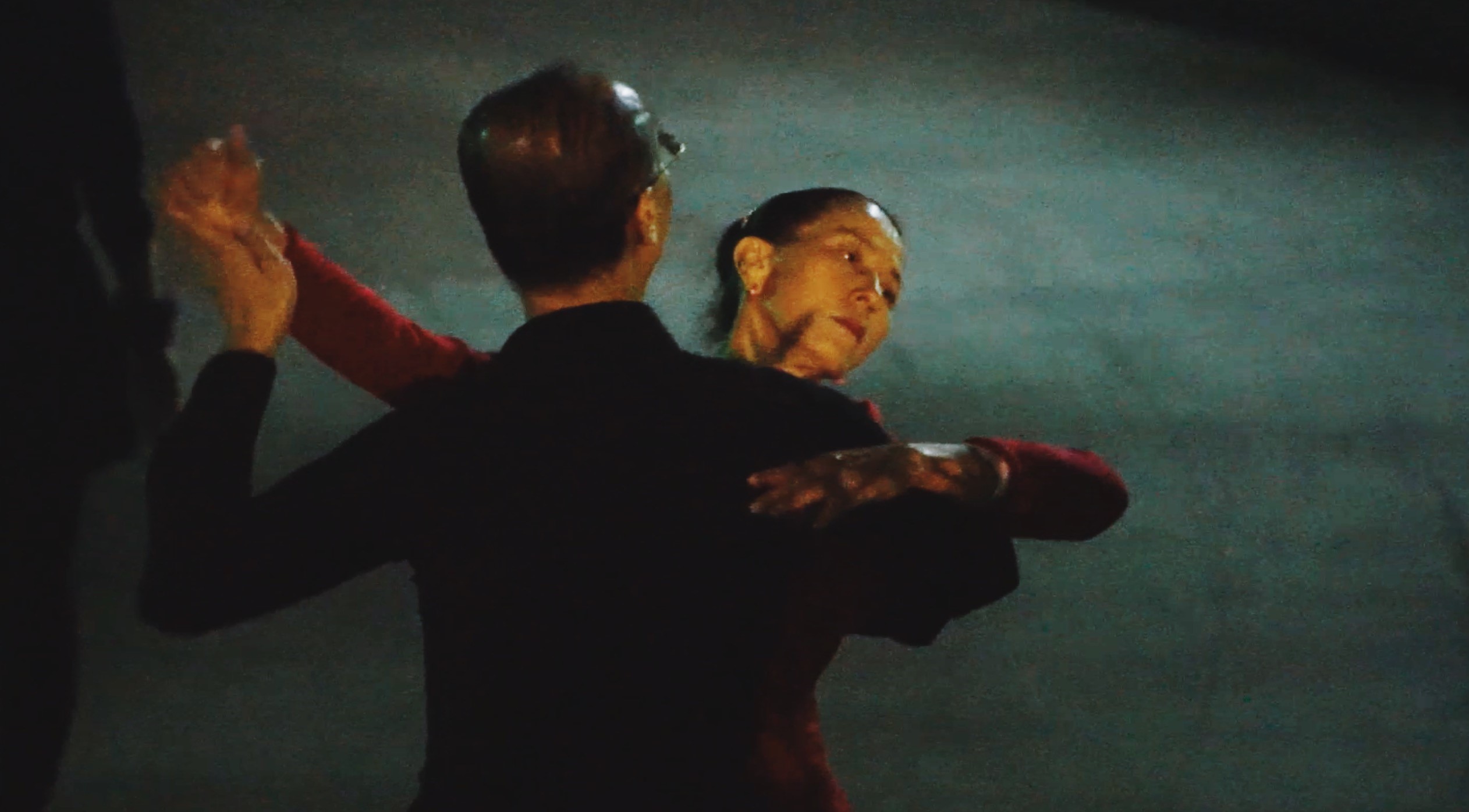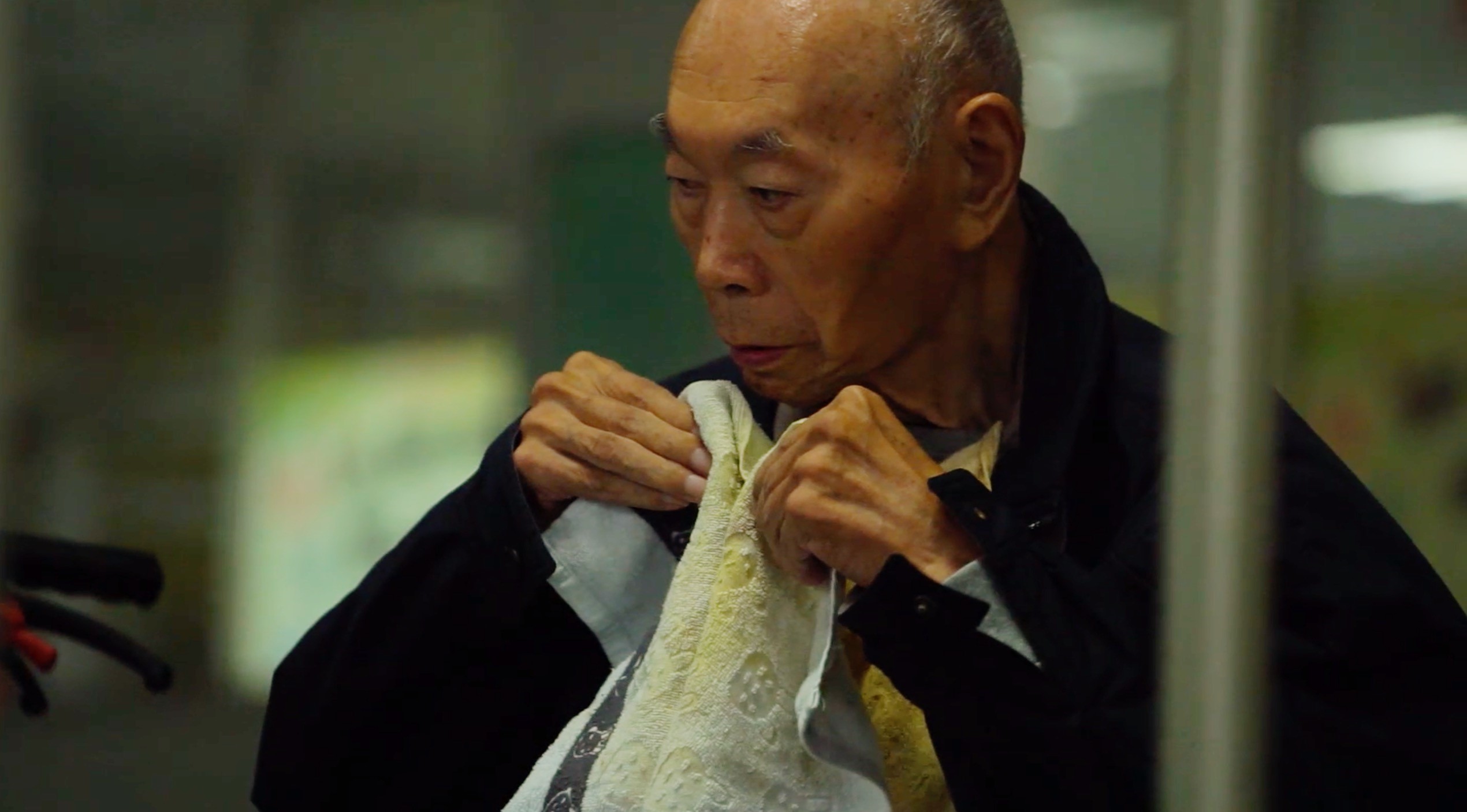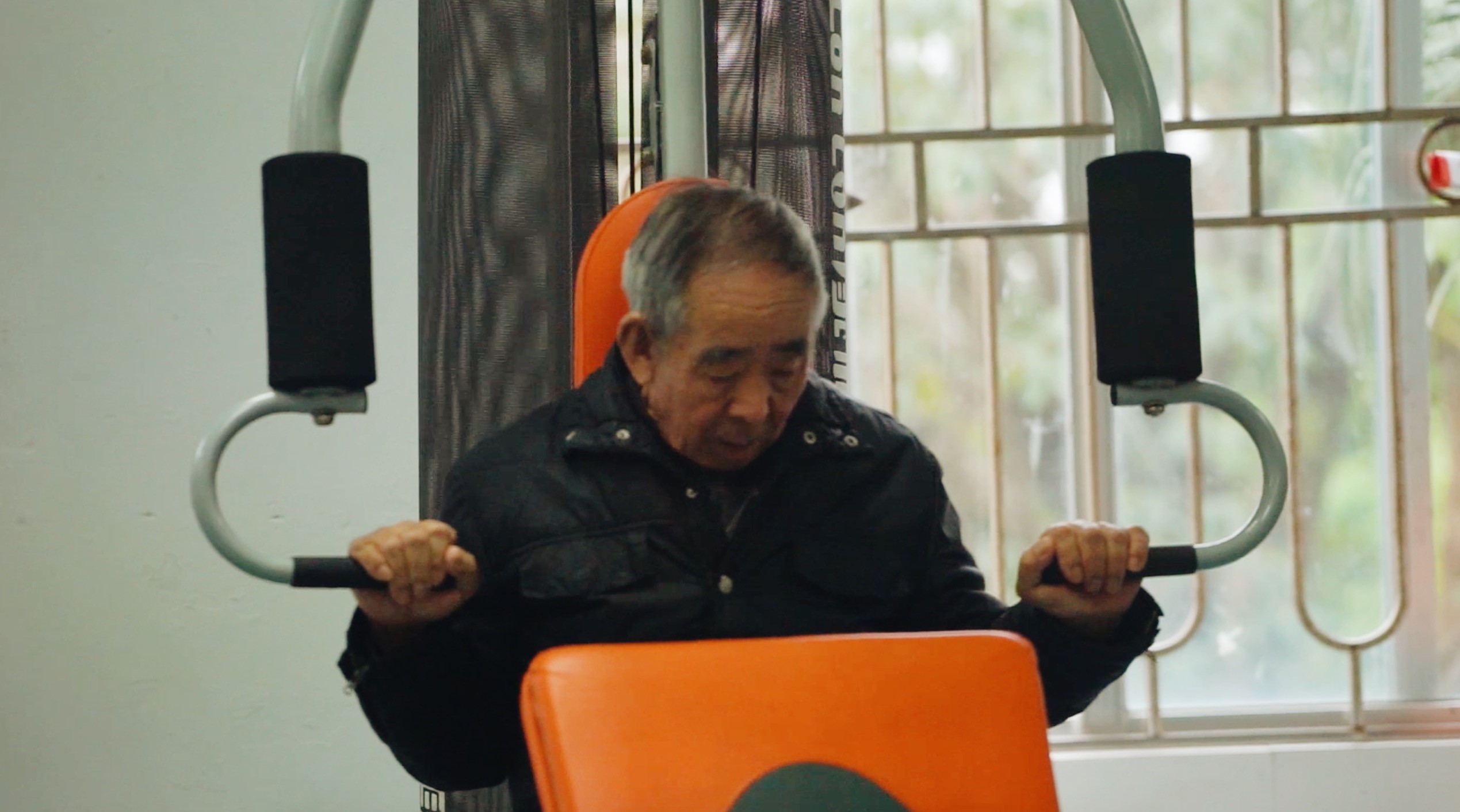The thick night glues heaven and earth together,
Stars mix with lights, and the Milky Way connects with the canal.
Our small stilt house becomes neighbors with the moon palace.
We set out from the campus on January 10th, embarking on the first biology study tour after the pandemic in the gentle afternoon sunlight. With 18 people full of expectations, under the guidance of Ms Helen and Mr Patric, we left the country and headed to an unknown tropical landscape. The journey was not long; it only took two hours from Shenzhen International Airport to Bangkok Airport. However, the long wait at the airport was like sitting on pins and needles for everyone. None of us expected that this short two-hour distance would take us to such a completely different world.
Before departure, we had heard of the reputation of the equatorial temperature. Despite being in the midst of winter, the weather forecast for Thailand showed temperatures of over 30 degrees Celsius. Confident in our ability to handle unexpected temperatures, given our residence in Shenzhen, we were surprised by the first wave of heat that hit us as soon as we stepped off the plane. This was no winter; it was clearly scorching summer! Whether it was the scorching sun outside or the hot air inside the corridor, they all indicated that the next four days would not be easy. With anxious hearts and sincere awe for the Thai sun, we boarded the car to Patcharat camp.
By the time we got off the car, it was already eight o’clock at night. The camp was surrounded by greenery, filled with a primitive atmosphere, and the sound of crickets occasionally came from the bushes. The distinctive stilt houses, with their strange and eerie totem poles, added a mysterious touch to the local primitive ecology. That night, while dining in the pavilion, we met the two professional local teachers for this trip. One was the kind-faced 72-year-old biologist Tony, and the other was a young ex-serviceman Sam with a strong British accent. These two individuals played a significant role in our study tour in the days to come, as will be highlighted later.
After settling in, the drowsiness swept in, and we went to bed early. In our dreams, we could still hear the faint chirping of insects and the mournful hooting of owls…
The next morning, clear skies stretched for miles, and the weather was pleasantly cool. The sounds of chirping birds from all directions filled our ears, and we saw squirrels playing on the branches when we looked up. Taking a deep breath, we smelled the refreshing fragrance of soil and grass mixed together. Refreshed and invigorated, we returned to the pavilion from the previous night. The local Thai aunties had already prepared bread and steaming hot eggs. So, while enjoying the lukewarm coffee in the cool morning, we looked forward to the upcoming adventures with the gentle tinkling of wind chimes in our ears.
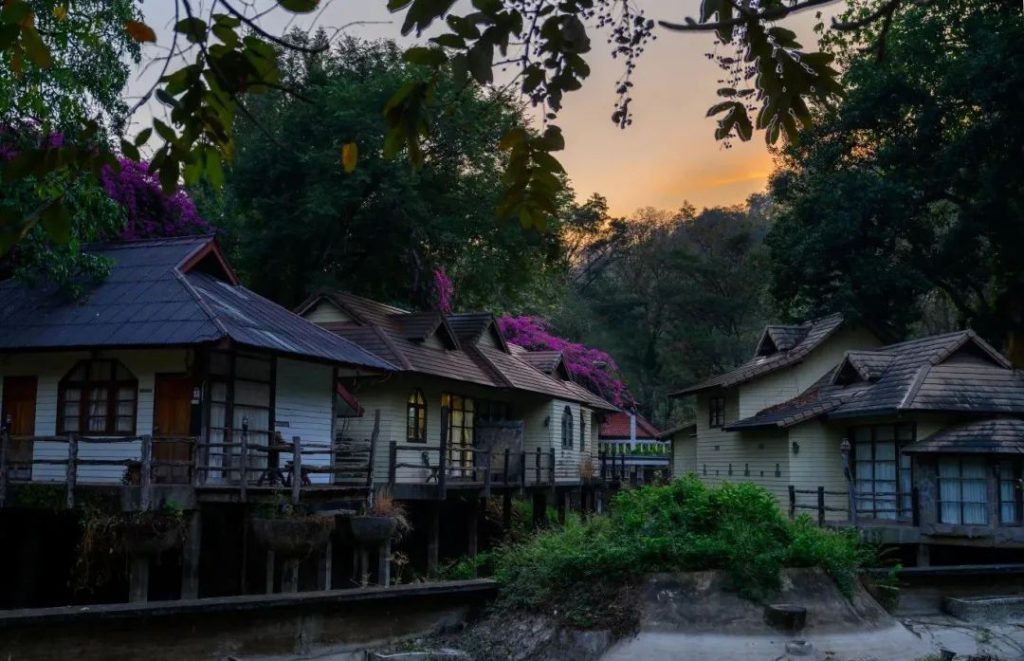
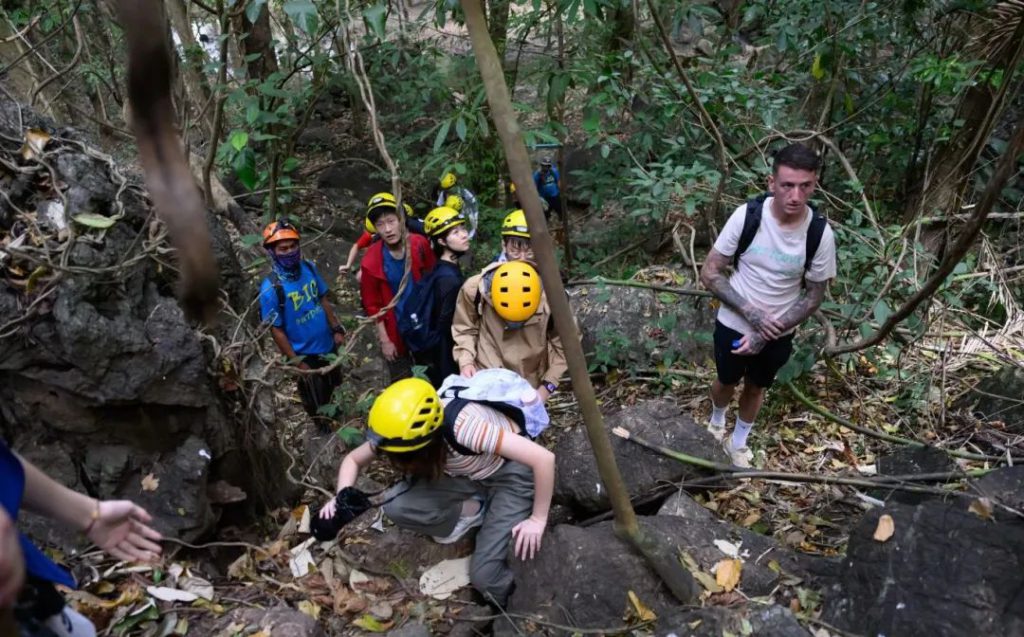
Next up, cave exploration!
After a rugged mountain road, we climbed with hands and feet, crossed a small stream, and stepped over countless ant columns. Before long, we were sweating profusely. Until Tony, who was leading the way, suddenly stopped, I knew we had arrived.
Standing dumbfounded at the entrance of the cave, it seemed like a gust of cold wind was blowing from inside, and it was pitch dark with no visibility, making us feel a sense of fear. The cave entrance was about ten meters below the rocks we were standing on, and the steep rocks were covered with slippery black spots, which I later learned were bat droppings. Everyone either applied the brakes or performed a “seat brake” and tentatively felt their way into the cave along the vines. In contrast, 72-year-old Tony walked as if on level ground, stepping lightly and swiftly, making us wonder who was really in their seventies.
“When you’re inside the cave, don’t drink water. I don’t want you to ingest bat droppings,” Tony reminded us as he briskly walked on the uneven rocks. After hearing this, we quickly put away our water bottles, silently thinking, “Could this kill us?” Who would have thought that as soon as we stepped into the cave, a novel smell wafted towards us. It seemed like a dusty smell but with an added hint of dampness, and the aftertaste was even a bit spicy. Shortly after, the temperature around us suddenly dropped. I was shocked by my sense of smell: what? Bat droppings actually smell good?! Later, to verify this, I interviewed two other classmates. One thought it was odorless, while the other detected a hint of hot pot aroma. It seems that this conclusion varies from person to person, so it remains to be considered.
To get back on track, in the pitch-black darkness, faint solitary lights shimmered. Our group of over 20 people continued to walk courageously towards the depths of the cave. High-powered flashlights cast our silhouettes on the stalactites, and for a moment, shadows were everywhere. In between, bats occasionally emitted sharp cries, as if protesting against this massive invasion into their private abode, disturbing the peaceful dreams of their small tribe.
The purpose of this cave exploration was to discover as many active organisms as possible to deeply understand the cave’s ecological chain.
But finding tiny organisms the size of melon seeds in this narrow stone crevice was as difficult as climbing to the sky. In the first few dozen minutes of searching, inexperienced as we were, we only saw scattered cave spiders. It wasn’t until Tony shone his spotlight on the ground, and a thumb-sized cave cockroach suddenly appeared in our field of vision. We rushed towards it as if we had found treasure, and this poor little cockroach, perhaps for the first time in its life, was thrust into the limelight but desperately tried to crawl back into the crevice.
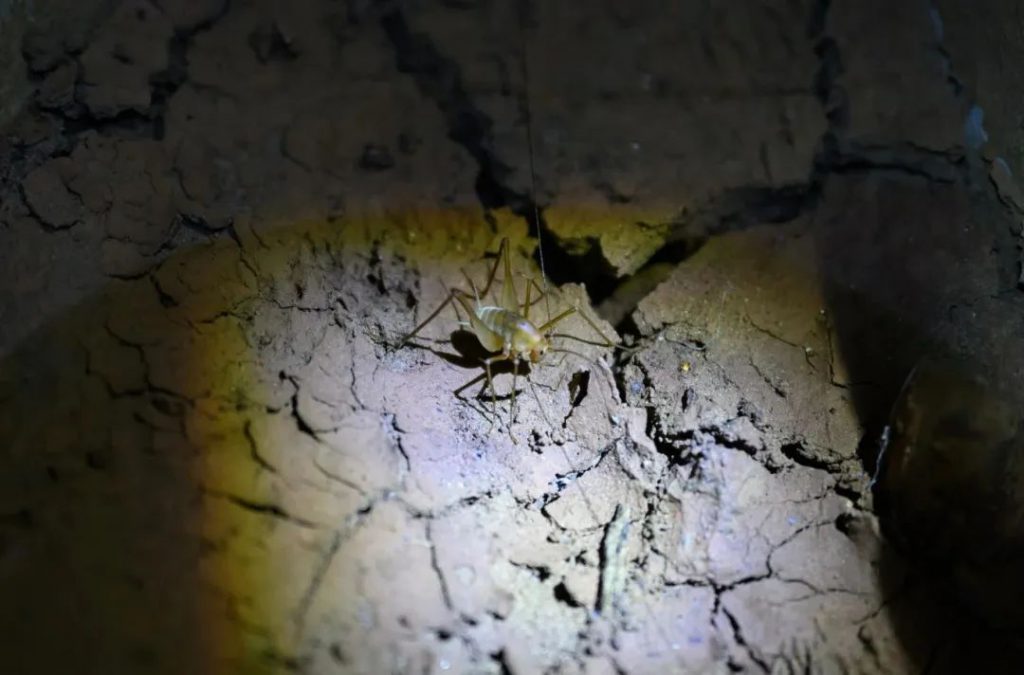

With concern for the bats and covered in bat droppings, we took a short break before shifting our focus to the second-largest national park in Thailand – Khao Yai National Park.
Entering the park, a long winding mountain road began. On the vast road, there were only two small vans, shuttling through the mottled spots on the ground, with scattered sunlight filtering through the branches. We enjoyed the refreshing air conditioning, gazing outside the window at the endless forest disappearing behind us. At that moment, the complexities of academics and the fleeting moments were completely set aside.
I could clearly hear the joyful chirping of birds in the forest, something the city had never possessed. Every note they sang seemed to praise the sun, and every wingbeat symbolized freedom. Just by observing their flying posture, you would understand that birds should never be confined; their wings were too splendid. “When they spread their wings and fly away, you’ll feel that keeping them locked up is a sin.” At this moment, I felt genuine joy, as if we had also become birds, briefly escaping from the cage. For the first time since the beginning, I felt a genuine passion for everything, breaking free from all utilitarian constraints.
Ms Helen later said in the forest that only by looking at these towering trees and immersing oneself in nature would one realize their own insignificance and the beauty of life.
As for the trivial troubles in life, they all became trivial in front of nature, like smoke disappearing. Yes, humans always need such moments; I believe that humans, no matter what, ultimately belong to nature. It seems that these trees are the true wise ones.

The destination this time was the junction of grassland and forest, and after getting off the car on an unvisited path, following the footsteps of Tony and Sam, we identified elephant tracks and dung along the way. We finally reached a vast grassland after learning that we needed to record the vegetation coverage of both the grassland and the forest. Each group carried a one-square-meter blue square and a light meter, wandering in the golden ocean, breathing the air called freedom. The vegetation on the grassland was relatively dense but singular; after peeling away the surface grass, there were almost no other plants on the ground.
But the scene in the forest was completely different. The first noticeable change was the brightness and temperature; my eyes were finally liberated from the golden scenery. The moist and warm environment allowed moss to grow freely everywhere, and large epiphytic plants were visible everywhere. Sometimes, sunlight penetrated through the gaps in the plants, creating a golden glow. It can be described as shadows in the woods, and the sounds of birds above and below. It was the first time for all of us to experience the wonderful process of counting grass in both the grassland and the forest. Looking back, it still seems incredible, remembering only the endless grass and trees and the despair in our hearts. So time quickly passed.
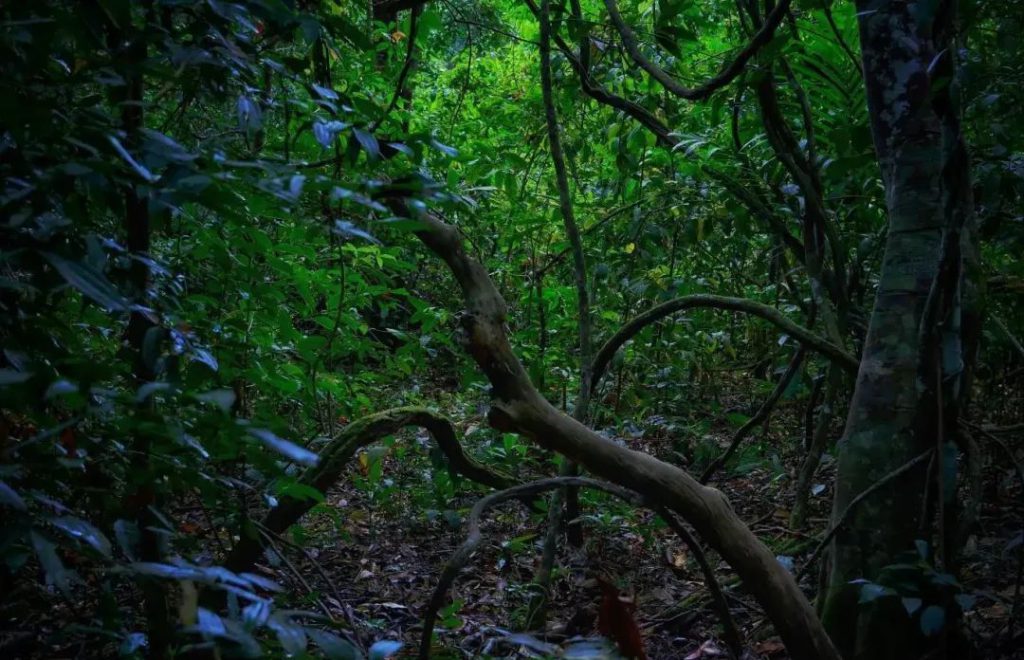

The next morning, while I was still in a dream, some classmates had already woken up at 5:30 am and joined Sam for a day of exploration in the dawn. At this point, I have to mention this fascinating British man. Unlike Tony, he didn’t have the scholarly and intelligent look, nor did he lead the team to introduce geological structures. But he definitely had an extraordinary vision—no disguise of any animal could escape his keen eyes, which I greatly admired. He could see double-horned rhinoceros birds flying over a hundred meters above, lock onto squirrels or deer hiding in the distance forest with just one glance, and even the clever protective coloration of insects in the forest seemed to be flaunting in front of him. Thanks to Sam’s sharp observation and superhuman vision, we were able to observe many highly vigilant animals, such as the giant lizard hiding in the bushes, the bamboo leaf green snake coiled in the rocks, and the porcupine that came out to forage at night. His enthusiasm for insects infected everyone, attracting all living beings. One time, while everyone was gazing up at bats on the lawn, he was silently waiting for a tarantula to poke its head out of its lair. We ran towards him after seeing it, but Sam was annoyed and helpless, saying that we were too noisy, and it wouldn’t come out anymore. Another night, a beetle made a fuss in the camp, causing chaos among the students. Perhaps it was frightened by the exaggerated reactions of these people. It landed on Sam’s hand without hesitation. He just had a peaceful expression and admired the beetle under the light. So, under Sam’s influence, even someone like me, who usually runs away at the sight of moths, followed my companions and rushed back to him to watch the innocent and clumsy big beetle flapping its wings. That’s how we spent the three-day adventure, embracing a mentality of both fear and not wanting to miss any beauty.
When the early morning team returned, the sun was already high in the sky. After a hasty breakfast, we once again plunged into the jungle and began the measurement of biodiversity. We randomly drew a circle with a radius of 3 meters in the forest, then counted the types and quantities of plants within the circle. This was a great challenge for everyone’s patience and meticulousness. Holding the leaves in hand, sometimes small samples taken on the ground seemed to be unable to find a second one. Only when we looked up did we surprisingly find that these small buds would one day grow into trees over forty or fifty meters tall! Because of this, our counting process was repeatedly frustrated, and the group attempted to fabricate data. However, after many ups and downs, a plant identical to the others could suddenly appear, dispelling our evil thoughts. This was really a case of searching for her thousands of times in the crowd, and suddenly turning around, there she was at the place where we had just stopped… After the data from this survey was processed using the Simpson diversity index, an approximate decimal could be obtained, representing the local biodiversity.
In the afternoon, we returned to the jungle and leaped between human civilization and the wilderness repeatedly. This time, we were going to measure the “waistline” of the big trees, which was the diameter. Then, with these data, we could estimate the approximate biomass. We finally came to the easiest measurement project in the past few days. The soft tape measure and ruler flew around, and the waistlines of each tree were recorded.

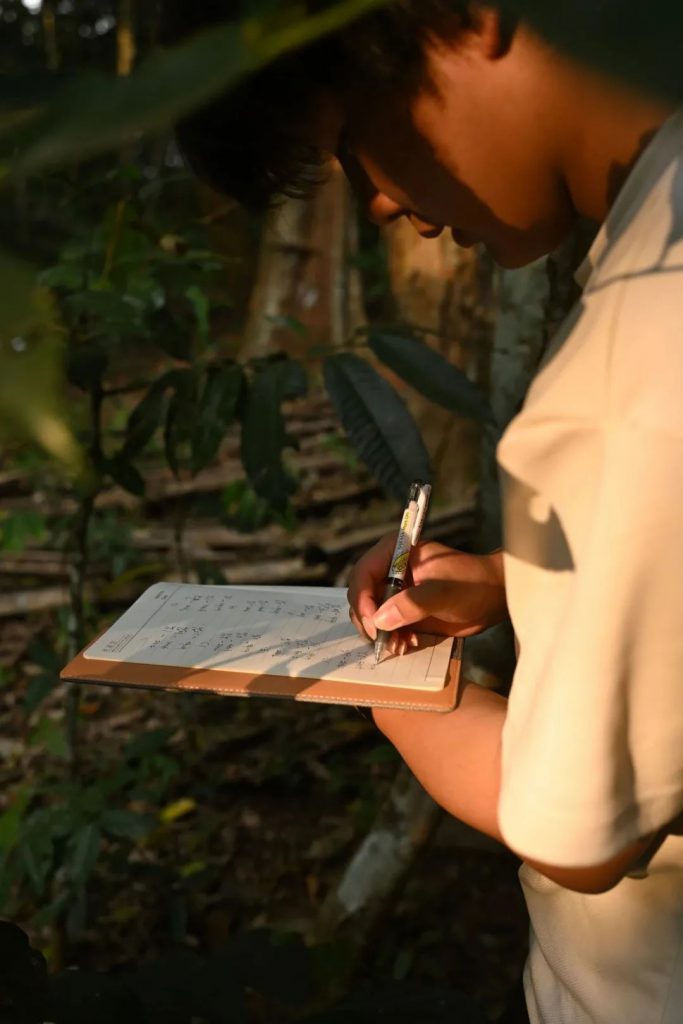
After this, we returned to the camp, sitting on the familiar platform of the stilted house to enjoy dinner. The wilderness at night was no longer as friendly as during the day, with rustling sounds in the bushes, hiding unknown dangers. According to Tony, there had been incidents of tigers eating people in this park. Therefore, as night fell, fragile humans had to hide in safe cabins to spend the long night. However, at this moment, everyone was looking forward because the next thing to come was a visual feast of nocturnal animals.
Sitting on the chairs in the back of the truck, surrounded by fences, the evening breeze whistling in our ears. My partners and I were fully alert, searching for animals around us under the illumination of the spotlight. Initially, even a deer casually strolling around could make us watch for a long time. Later on, we saw hedgehogs coming out to forage, leopard cats wandering under the big trees, civets sneaking in the grasslands, and fierce-looking wild dogs… Using flashlights, we saw a faint pair of bright green lights floating in the grass, which was the wild projection of the jackal’s wildness. Seeing its wild and cunning appearance, I was scared into cold sweat. When it was disturbed by the flashlight, it stared at us for a while, then quietly slipped into the jungle. Suddenly, I felt that in the world of the jungle at night, we humans were not at the top of the food chain. We were just temporary visitors. It was also under the cover of darkness that I understood the true meaning of biodiversity. Every life had its unique role in the ecosystem, and every existence was indispensable.
Returning to the camp, the journey in the park was coming to an end. Sitting on the platform, looking at the vast wilderness, everyone was lost in thought. From the early morning mountain road to the dense forest, from the golden grassland to the twilight jungle, this was a journey of self-discovery and understanding of nature. In the process, we measured trees, counted grass, recorded data, and observed animals. However, what we gained was not just a set of cold numbers and facts but a profound experience and insight.
Nature is not only a resource for human use but also a complex and delicate system full of mysteries and wonders. As humans, we should not only appreciate its beauty but also shoulder the responsibility of protecting it. The journey to the jungle in Thailand was not just a field trip but a journey of the heart, a journey that made us feel the magnificence of nature and the importance of coexistence.
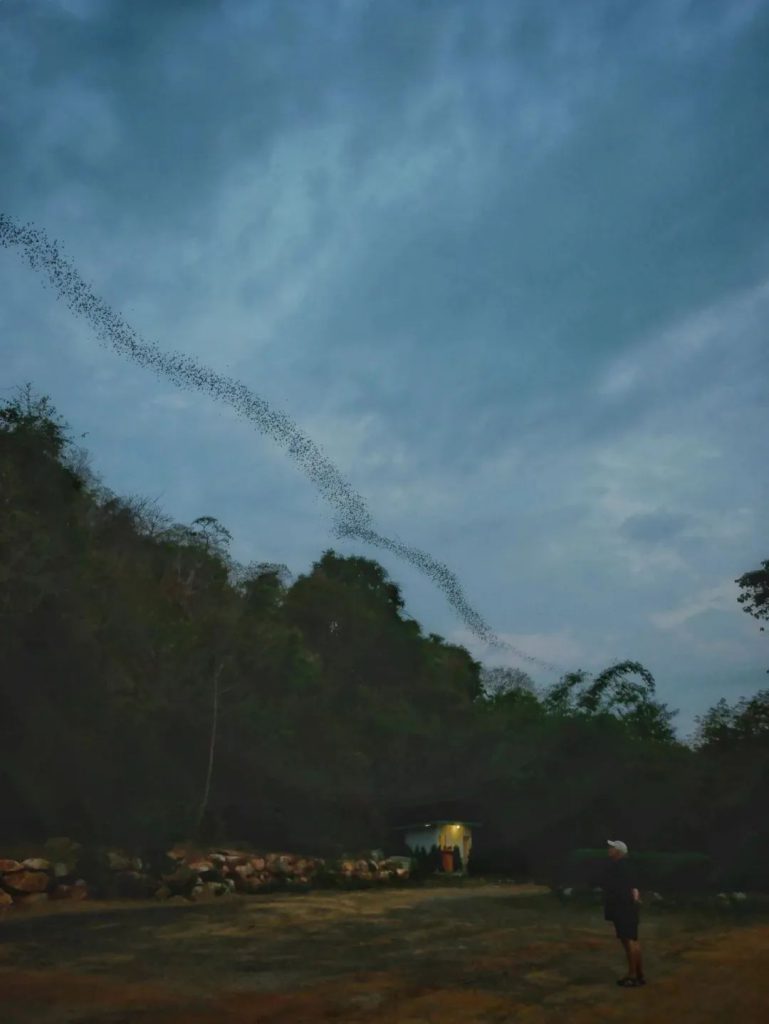

Student Feedback
In the previous two years in SCIE, there haven’t been many opportunities for field trips. This should be my second field trip, but it can be said to be the most unique and unforgettable one. Even now, I seem unable to leave that quiet and peaceful paradise, unwilling to believe that I have left those lovely people and things behind.
I won’t forget the rugged paths and caves of Khao Yai, where a moment’s inattention could lead to bumps and bruises. Yet, in moments of exhaustion, someone would discover a fascinating creature, and a crowd would gather to observe in amazement. It’s also the night with a power outage, lying on the floor of the stilt house, singing old songs softly, and squatting on the roof, by the roadside, at the doorway encountering monkeys, exotic insects, occasional passing deer, and leisurely giant lizards crossing the road. I don’t want to forget the feeling when it’s silent and dark all around, but looking up reveals a brilliant and mysterious starry sky, with the stars hanging high, as if I’ve captured the entire Milky Way in my eyes.
I miss the two local teachers, Sam and Tony. Animals seem to follow them; it’s like being with them always leads to unexpected encounters with unseen creatures. Sam always joyfully asks me for various photos, and Tony, with fewer words, always answers any questions we have. I hope to see them again.
Afterward, I will forever remember Khao Yai, and the people and things that existed there, that I met, and experienced.

Rita
This is the happiest trip since the end of the pandemic! Everyone was very, very kind and supportive, and the atmosphere these days was in a joyful place. I will never forget the black wooden houses we stayed in, the cold showers we took, the bat caves we explored, the monkeys we chased, the mountains we climbed, the exotic birds we saw, the water insects we caught, the Thai food we ate, the elephants we never encountered, the deer we chased, the stars we counted, and the cats and civets we photographed. After going crazy in the dangerous yet gentle nature, it’s as if I saw more things worth pursuing, like an endless stream of dust, water waves, people, stars, and the secrets hidden among the bats.

Ariane
- Article / Thomas Zhao
- Pictures / Dianne, Rita, Thomas

